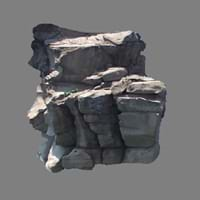Definition
Comendite is a hard, peralkaline igneous rock, a type of light blue grey rhyolite
Jasperoid is a rare, peculiar type of metasomatic alteration of rocks
Discoverer
Unknown
Unknown
Etymology
Comendite derives its name from the area of Le Commende on San Pietro Island in Italy
From silica, the main mineral content of Jasperoid
Class
Igneous Rocks
Sedimentary Rocks
Sub-Class
Durable Rock, Hard Rock
Durable Rock, Medium Hardness Rock
Group
Volcanic
Not Applicable
Other Categories
Medium Grained Rock, Opaque Rock
Coarse Grained Rock, Fine Grained Rock, Medium Grained Rock, Opaque Rock
Texture
Porphyritic
Earthy
Color
Blue, Bluish - Grey
Black, Brown, Colourless, Green, Grey, Pink, White
Durability
Durable
Durable
Scratch Resistant
Yes
Yes
Appearance
Foliated
Glassy or Pearly
Interior Uses
Countertops, Decorative Aggregates, Interior Decoration
Decorative Aggregates, Floor Tiles, Homes, Interior Decoration
Exterior Uses
As Building Stone, As Facing Stone, Garden Decoration
As Building Stone, Garden Decoration, Office Buildings, Paving Stone
Other Architectural Uses
Curbing
Curbing
Construction Industry
Building houses or walls, Cement Manufacture, Construction Aggregate, for Road Aggregate, Landscaping, Making natural cement, Raw material for the manufacture of mortar
As a Flux in the Production of Steel and Pig Iron, As a Sintering Agent in Steel Industry to process Iron Ore, As Dimension Stone, Cement Manufacture, for Road Aggregate, Making natural cement, Manufacture of Magnesium and Dolomite Refractories, Production of Glass and Ceramics, Serves as an Oil and Gas Reservoir rock
Medical Industry
Not Yet Used
Taken as a Supplement for Calcium or Magnesium
Antiquity Uses
Artifacts
Artifacts, Jewellery, Monuments, Sculpture
Commercial Uses
Cemetery Markers
An Oil and Gas Reservoir, As a Feed Additive for Livestock, Gemstone, Metallurgical Flux, Production of Lime, Soil Conditioner, Source of Magnesia (MgO)
Types
Rhyolite
Not Available
Features
Very fine grained rock, It is One of the Oldest, Strongest and Hardest Rock
Host Rock for Lead, Traps for subsurface fluids like Oil and Natural Gas., Zinc and Copper Deposits
Archaeological Significance
Monuments
Not Yet Used
Used
Famous Monuments
Not Applicable
Data Not Available
Sculpture
Not Yet Used
Used
Famous Sculptures
Not Applicable
Data Not Available
Pictographs
Not Used
Used
Petroglyphs
Not Used
Used
Figurines
Not Yet Used
Used
Formation
Comendite is a type of Igneous rock which is formed due to cooling and solidification of lava or magma. It may form with or without crystallization, either below the surface as intrusive rocks or on the surface as extrusive rocks.
Jasperoid is a rare and peculiar type of metasomatic alteration of rocks. It is formed by extreme alteration of wall rocks within a shear zone which may occur in sediments, andesites, trachytes and basalts.
Mineral Content
Albite, Amphibole, Quartz
Clay Minerals, Pyrite, Quartz, Sulfides
Compound Content
Al, Fe, Potassium Oxide
NaCl, CaO, Carbon Dioxide, Magnesium Carbonate, MgO
Types of Metamorphism
Cataclastic Metamorphism, Regional Metamorphism
Burial Metamorphism, Cataclastic Metamorphism, Regional Metamorphism
Types of Weathering
Biological Weathering, Chemical Weathering, Mechanical Weathering
Not Applicable
Types of Erosion
Coastal Erosion, Water Erosion
Not Applicable
Grain Size
Medium Grained
Medium to Fine Coarse Grained
Fracture
Pervasive
Conchoidal
Streak
Bluish Black
White
Porosity
Highly Porous
Less Porous
Luster
Dull
Vitreous and Pearly
Cleavage
Not Available
Perfect
Specific Gravity
2.38
2.8-3
Transparency
Opaque
Transparent to Translucent
Density
Not Available
2.8-2.9 g/cm3
Specific Heat Capacity
Not Available
Resistance
Heat Resistant, Impact Resistant
Heat Resistant, Pressure Resistant, Wear Resistant
Deposits in Eastern Continents
Africa
East Africa
Morocco, Namibia
Europe
Italy
Austria, Italy, Romania, Spain, Switzerland
Others
Not Yet Found
Not Yet Found
Deposits in Western Continents
North America
Not Yet Found
Mexico, USA
South America
Not Yet Found
Brazil, Colombia
Deposits in Oceania Continent
Australia
Queensland
New South Wales, Queensland, Yorke Peninsula
All about Comendite and Jasperoid Properties
Know all about Comendite and Jasperoid properties here. All properties of rocks are important as they define the type of rock and its application. Comendite belongs to Igneous Rocks while Jasperoid belongs to Sedimentary Rocks.Texture of Comendite is Porphyritic whereas that of Jasperoid is Earthy. Comendite appears Foliated and Jasperoid appears Glassy or Pearly. The luster of Comendite is dull while that of Jasperoid is vitreous and pearly. Comendite is available in blue, bluish - grey colors whereas Jasperoid is available in black, brown, colourless, green, grey, pink, white colors. The commercial uses of Comendite are cemetery markers and that of Jasperoid are an oil and gas reservoir, as a feed additive for livestock, gemstone, metallurgical flux, production of lime, soil conditioner, source of magnesia (mgo).










